Our urban areas are filled with hard impervious surfaces: roofs, roads, carparks and footpaths. All of which contribute to stormwater runoff, and the resultant flood risk and water pollution. Although roads make a significant contribution to this problem, they also present perhaps the greatest opportunities for green infrastructure use. One principle of green infrastructure involves reducing and treating stormwater close to its source (“source control”). Greening streets is a way to do this - streets can incorporate a wide variety of design elements. Although, depending on the context, the design and appearance of green streets will vary considerably, the functional goals are the same: to provide source control of stormwater, limit its transport and pollutant conveyance to the collection system, and provide amenity to communities.
Green Streets goals:
1. Mimic the hydrology present prior to development
2. Provide multiple benefits along the street:
3. Integrated stormwater management;
4. Volume and peak reductions in stormwater discharged to receiving streams, rivers and larger bodies of water
5. Key linking component in community efforts to develop local green infrastructure networks
6. Aesthetic enhancement to the development
7. Can improve local air quality by providing interception of airborne particulates
8. Provision of shade for cooling
9. Enhanced economic development along the transit corridor
Numerous approaches are available for creating Green Streets including:
1. Pinch Points
2. Swales
3. Bioretention Curb Extensions and Planters
4. Permeable Pavement
5. Street Trees and Tree Boxes.
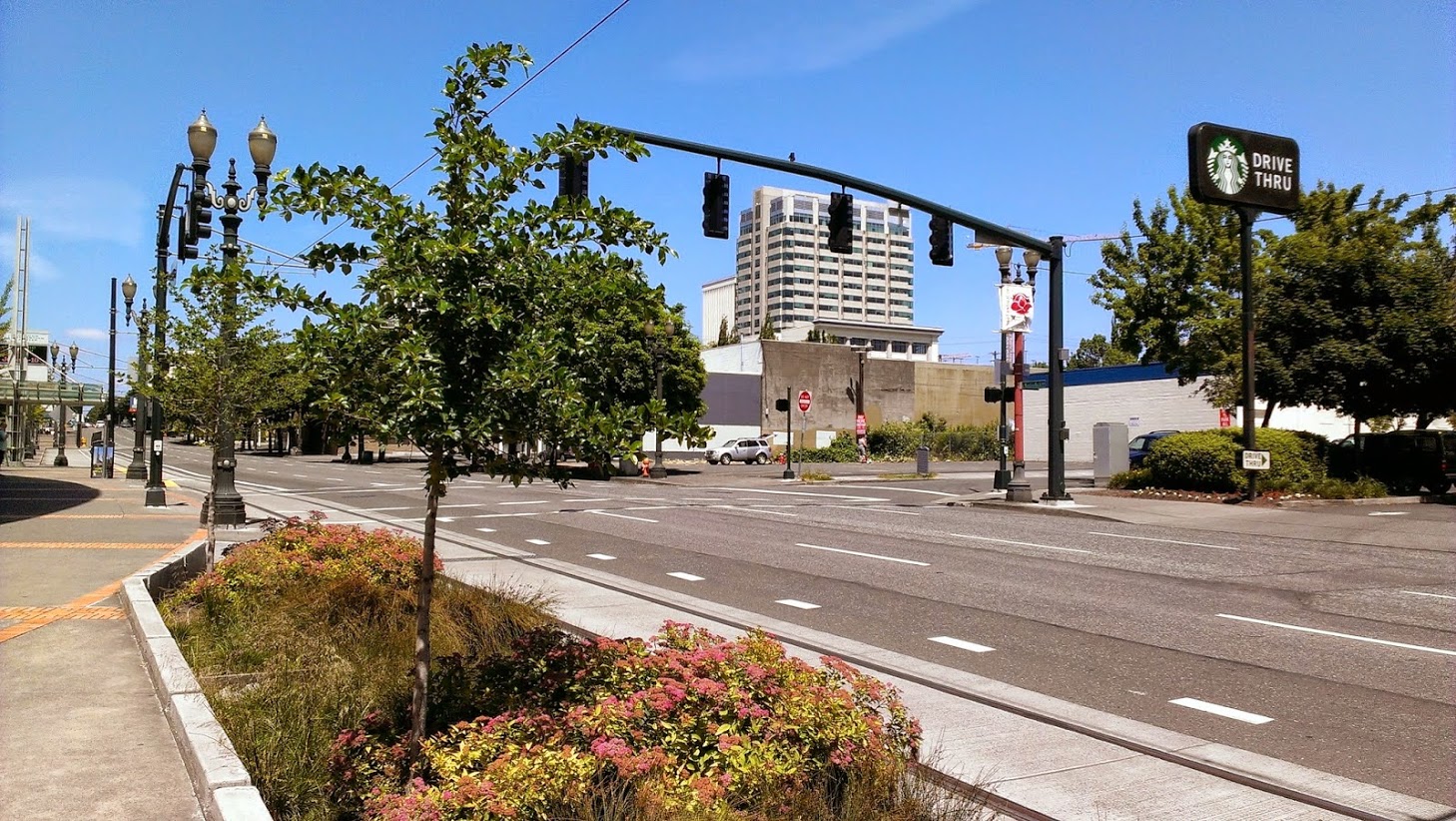

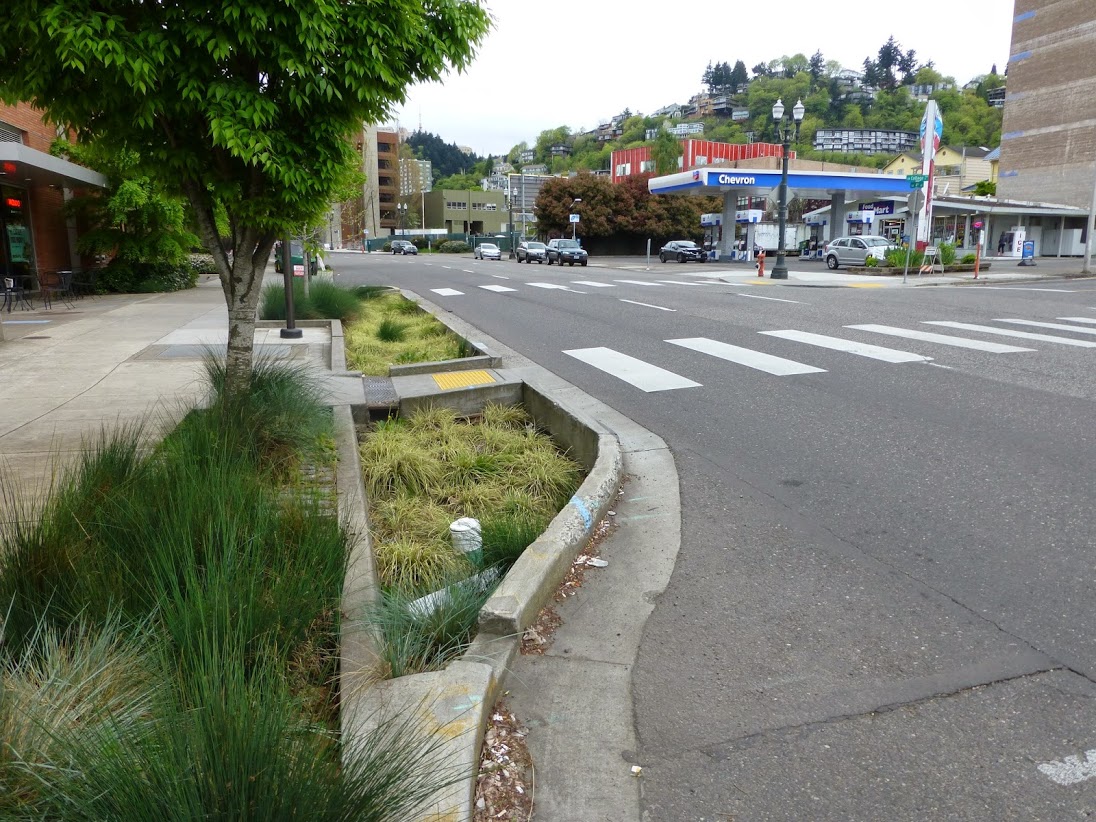
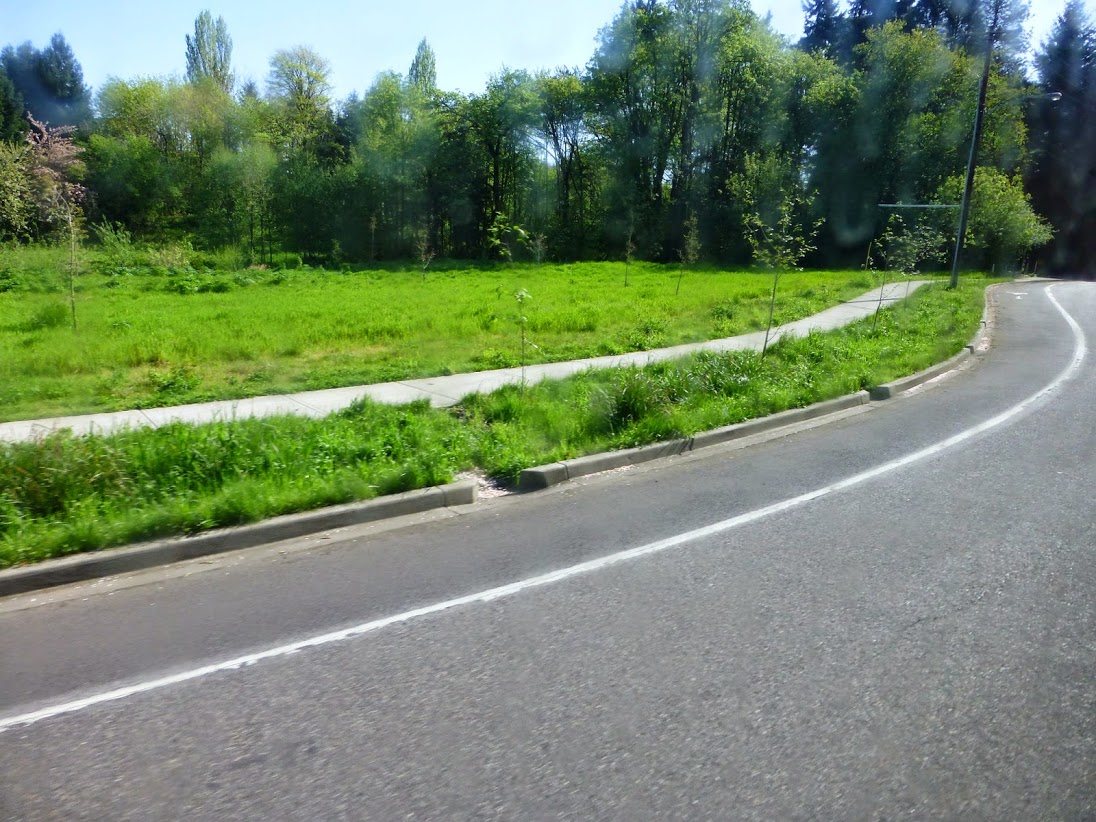
Images: pinch point, bioretention curb extensions and swale (© Scott Arthur)
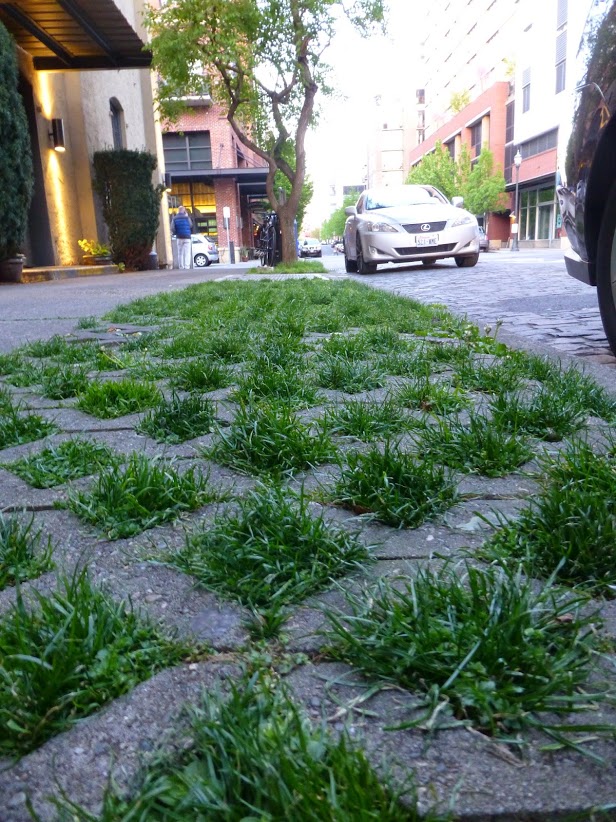
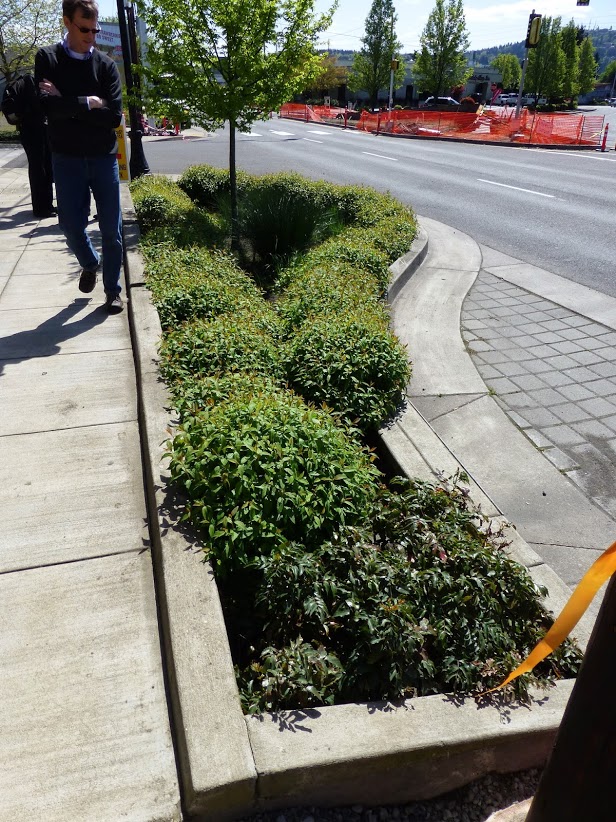
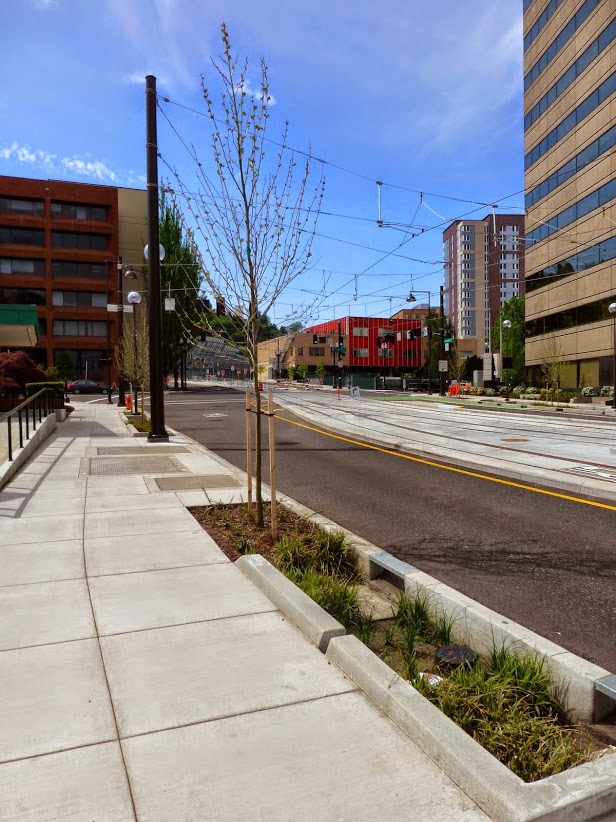
images: permeable paving, street trees and tree boxes (© Scott Arthur)


